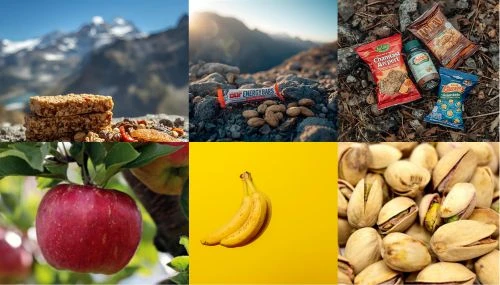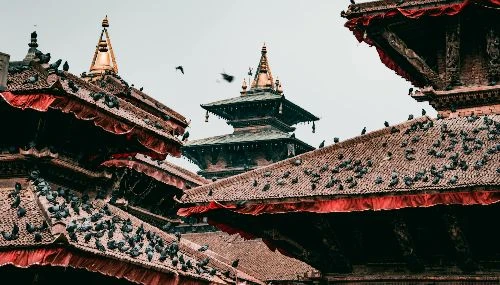Nepal, home to Everest and legendary trekking routes, draws dreamers and hikers from every corner of the world. The trails wind through snow-capped peaks, prayer-flag-strewn passes, and quiet villages where time seems to stand still.
Somewhere in the middle of that dream, a question often sneaks in: “How safe is it?”
Here’s the truth - trekking in Nepal isn’t dangerous the way some posts or YouTube videos make it out to be. It’s raw. It’s real. It’s sometimes unpredictable. But every year, thousands of trekkers return with stronger legs, full hearts, and stories they’ll tell for a lifetime.
Let’s walk through Nepal’s real safety picture - no fear, no drama. Just straight-up guidance to help you trek with confidence.
Region-wise Safety Status Overview
Everest Region (Khumbu)
The Everest region is one of the safest and most organized trekking zones in Nepal. Trails to Everest Base Camp are clearly marked, packed with teahouses, and dotted with helpful checkpoints. Even quieter routes to the Gokyo Lakes have steady foot traffic and solid infrastructure.
Namche Bazaar and Lukla can get crowded - and yes, petty theft happens now and then. Keep your gear close, especially in shared lodges.
Annapurna Region
In the Annapurna region, comfort and adventure walk hand-in-hand. Popular trails like Annapurna Base Camp, Ghorepani Poon Hill, and Mardi Himal are well-supported and great for beginners. Lodges are reliable. Rescue access is stronger here than in most places.
Looking for solitude? Try Nar Phu or Khopra Danda - still safe, just more remote. Want something rugged? The Dhaulagiri Circuit brushes the region’s edge with wild terrain and serious challenges.
However, remember, mountain weather turns fast. That 2014 snowstorm taught everyone a lesson: always check forecasts and listen to local updates before setting out.
Langtang and Helambu
These valleys were hit hard by the 2015 earthquake. But what’s come back is strong, welcoming, and deeply moving. Trails are rebuilt. Teahouses stand ready. Trekking here feels like walking through a story of resilience.
The terrain is manageable, and the communities are grateful to see trekkers return.
Manaslu and Tsum Valley
These restricted areas demand permits, licensed guides, and more planning, but that structure is what makes them safer. You’re walking through wild landscapes and untouched culture. Services are fewer, but guides here know the land inside out.
Don’t wander off alone. Stick with your group. Stay sharp, especially near road-accessible villages where theft has happened. Your guide isn’t just your navigator - they’re your safety net.
Kanchenjunga, Dolpo, Far West
This is Nepal unplugged (remote, raw, and real). Trails can stretch for days between villages. Lodges may be few or nonexistent. If something goes wrong, help isn’t nearby.
That’s why you don’t wing it here. Hire an experienced agency guide. Carry emergency gear. Use satellite communication if possible. Be extra cautious with valuables, and avoid hiking alone, especially near dusk.
These regions are incredible. But they ask for full respect - and full preparation.
Busy Trails vs Remote Paths: Why It Matters
When it comes to choosing between the busy and remote trails, think of it like choosing between a busy main road and a quiet mountain path. Popular trails like Everest and Annapurna come with built-in safety. It means more hikers, better signs, quicker help, and steady lodge support. For newer trekkers, they offer peace of mind.
Now picture the remote routes - places where the silence stretches, the crowds vanish, but the beauty feels untouched. They offer deep solitude and raw adventure, but they ask more from you. Signs may disappear, trails can be hard to follow, and lodges might be closed outside the main seasons. If you're injured or lost, help could be days away.
There’s no right or wrong choice here. It’s about matching your route to your comfort level - and preparing smart. The more remote the trail, the more self-reliant you need to be. Go in ready, stay alert, and let the trail give you what you came for.
Earthquakes and Natural Calamities: Should You Worry?
Nepal’s mountains are breathtaking, but they sit on a fault line. Major earthquakes like the one in 2015 are rare, but not forgotten. Since then, many lodges and trails have been rebuilt stronger, and building standards continue to improve. Most trekking routes today are safer than ever, but nature always deserves respect.
Monsoon season (June to August) brings heavy rain, which raises the risk of landslides and floods, especially on exposed trails. The safest season? Trek during spring (March to May) or autumn (September to November), when the skies are clearer and the trails more stable.
Adventure thrives on preparation. Respect the land, know the risks, and stay alert - that’s how you keep the trek memorable for all the right reasons.
Petty Crimes: Are Trekkers Targets?
Trekking trails in Nepal are generally peaceful, and crime is rare, especially when compared to busy city areas. But a little awareness goes a long way. Even in the mountains, it's smart to take basic precautions so you can enjoy the journey with peace of mind.
Stay alert in towns like Namche, Lukla, or Pokhara, where busy teahouses and markets can attract opportunistic theft. Lock your room at night. Keep valuables like phones, passports, and cash zipped securely in your daypack - not scattered around or left in plain sight. Avoid flashing expensive gadgets, and be discreet when handling money.
You’re not being paranoid - you’re just being responsible. Most trekkers leave Nepal with incredible memories and zero issues. Help keep it that way by staying aware, packing smart, and protecting what matters.
How Safe Is Trekking for Women?
Nepal is one of the most welcoming and respectful trekking destinations for women. Whether you’re traveling solo or with friends, many female trekkers report feeling safer on the trails here than in big cities back home. Local communities often go out of their way to make visitors feel looked after - it’s part of the culture.
That said, safety always starts with awareness and preparation. Dress modestly, especially in traditional villages - cover your shoulders and knees to show respect. Choose a reputable guide or trekking agency with strong reviews and a proven track record. Don’t be afraid to ask questions or request a female guide if that makes you more comfortable.
Solo trekking is possible, but going with a guide or partner offers more than just safety. At the same time, it gives you insight into the culture and smoother access to services along the trail. And always trust your gut. If something feels off, step away politely and move on. The mountains offer freedom, beauty, and strength. Hence, walk with confidence, stay aware, and let the experience empower you.
Who’s Watching Out for You on the Trails?
Trekking in Nepal might feel like you're on your own, but there are always people around to help. There's a quiet network watching out for you every step of the way.
Teahouse owners often notice if a guest doesn't arrive when expected. Guides and porters aren't just there to carry loads - they know the land, the risks, and the rhythm of the trail. Checkpoints track your permits and movement, adding an extra layer of oversight. And villagers? They take pride in helping trekkers, often offering support without being asked.
Additionally, if you trek with a trek operator, they will have strong communication channels and crisis-response protocols in place. Furthermore, if you’ve made a TIMS card, the government (and local-level agencies) will have an idea about your itinerary, expected return date, and how long of an absence requires emergency response.
The Real Dangers (And How to Outsmart Them)
Trekking in Nepal isn’t about dodging dramatic cliffhangers - the real risks are much quieter, and a lot more preventable. Here's what to look out for and how to stay ahead of the game:
Altitude Sickness: This one creeps up on you. Go slow, drink plenty of water, and listen to your body. If you’re feeling dizzy, nauseous, or short of breath, stop, rest, and descend if symptoms get worse. Never push through altitude sickness - it’s not a test of toughness.
Unpredictable Weather: Don’t trust a clear morning sky. Conditions can shift in minutes, especially at higher elevations. Always carry extra layers, a waterproof jacket, and a backup plan. Check the forecast - but trust your guide even more.
Trail Injuries: It’s not the dramatic falls that cause most problems - it’s the small slips on rocky trails or loose gravel. Walk mindfully, wear good boots, and focus on your footing. Take breaks when you're tired, and don’t hike in a hurry.
Wildlife: Encounters with wildlife are rare but possible, especially in forested or remote regions. Don’t leave food out overnight, avoid walking alone in dense woods at dusk or dawn, and never approach wild animals, even if they seem calm. Let nature stay wild - from a safe distance.
Petty Theft and Robbery: While serious crime is rare, theft does happen, especially in more remote or less-monitored areas. Keep your valuables zipped up and tucked away, don’t flash expensive gear, and always lock your room at night. Avoid walking alone at dawn or after dark, especially near road-accessible areas or the outskirts of villages.
Safety Essentials Every Trekker Should Carry
When you're days away from the nearest road, your gear isn’t just for comfort - it’s your first line of defense. Pack smart, not heavy, and think of these essentials as your personal safety net:
First-Aid Kit: A small, well-stocked kit is non-negotiable. Don’t forget blister plasters - they’re lifesavers after long hours on rocky paths. Add basic painkillers, antiseptic cream, and bandages for small cuts and sprains.
Altitude Medication: If your doctor recommends it, bring meds to help prevent or manage altitude sickness. Even better, combine this with slow, steady pacing and proper hydration to give your body time to adjust naturally.
Weather Protection: Mountain weather shifts fast. Pack an all-weather jacket, gloves, and extra layers. Cold or wet conditions can escalate quickly, especially if you're injured or fatigued.
Water Purification: Always carry drops, tablets, or a filter. Clean water isn’t always guaranteed, especially in remote areas. Dehydration at altitude hits harder than you'd expect.
Navigation Tools: A physical map of your trekking route is essential, and so is someone in your group who actually knows how to read it. Don’t rely entirely on GPS; batteries die, signals vanish.
Snacks That Work for You: Pack energy-dense snacks you genuinely like. Long treks drain your reserves fast, and a familiar bite can lift your mood when fatigue kicks in.
Emergency Communication: On remote trails, a satellite messenger or emergency beacon can bridge the gap if things go south. For more accessible regions, a local SIM with decent coverage might be enough, but always have a way to reach help.
Footwear and Focus: Good trekking boots prevent most slips and twisted ankles. But no gear beats attention - stay focused on each step, especially on rough or slippery terrain.
When you’re prepared for the altitude, the weather, and even the odd blister or stumble, you’re already ahead. That’s when you get to focus on what really matters - soaking up the mountains, one confident step at a time.
Final Thoughts
With improvement in trip operator-government collaboration and emergency response infrastructure, Nepal is safer than ever on the trails. Nonetheless, stay mindful of the altitude, the weather, and the terrain beneath your boots. Move at your own pace, watch your footing, and listen to what your body’s telling you. Preparation isn’t fear - it’s freedom. The more ready you are, the more present you can be.
So go in aware. Stay open to the kindness of the people, the rhythm of the trail, and the awe that hits you when you turn a corner and see the peaks stretching forever. Nepal’s been welcoming trekkers for generations - now it’s your turn to walk the path, safely and fully.


.webp)

